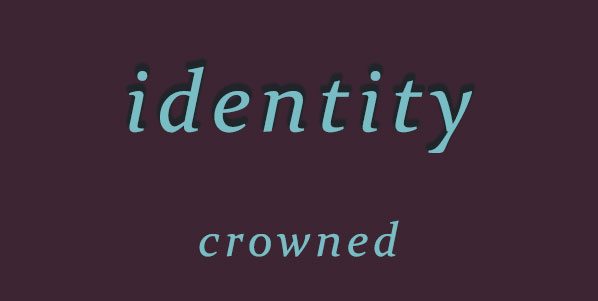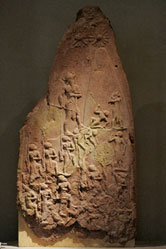In the first post “human identity – representation” we looked at the Hebrew words used for image and likeness. We concluded that the authors of Genesis wanted us to think-in an holistic manner, which suggests that to their mind the image/ likeness was something included ideas around a statue ie physical. We also introduced the idea that we are made in such a way as to represent (think re-present or to “present again”) Yahweh God. We also saw there was a very clear, and somewhat disturbing “idol” theme to the word image (tslem). So there was lots to chew on. Back to our key passage Gen 1 for something a bit regal…

26 Then God said, “Let us make man in our image, after our likeness. And let them have dominion over the fish of ….”
28 And God blessed them. And God said to them, “Be fruitful and multiply and fill the earth and subdue it, and have dominion over the fish of the sea and over the birds of the heavens and over every living thing that moves on the earth.” (ESV)
Dominion
The word translated “dominion” ( rule is another translation) is “radah”.[1] It is a word used of royalty within the Old Testament. In 1 kings 4:24 we read ” … he [Solomon] had dominion (radah) over all the region west of the Euphrates…” and in Ps 72:8 “May he [the king] have dominion (radah) from sea to sea…” (note the references to water.) It is worth giving a fuller quote from psalm 8 where the author describes this links “royalty” with humanity.
3 When I look at your heavens, the work of your fingers,
the moon and the stars, which you have set in place,
4 what is man that you are mindful of him,
and the son of man that you care for him?
5 Yet you have made him a little lower than the heavenly beings
and crowned him with glory and honor.
6 You have given him dominion over the works of your hands;
you have put all things under his feet,

Here a different word is used for “dominion . However the phrase in vs6 “You have put all things under his feet” is denotes a common royal theme which can be seen in the artifacts left by other cultures in the aNE (ancient near east). The victory stele of Naram-Sin (approx. 2400BC) shows Naram-Sin an Akkadian king, putting his enemies under his feet.[2] (Note the king is shown as bigger than his army and chaotically arranged foes. Also his helmet has horns, a common aNE depiction of Kingship/divinity…)
In his book on the psalms J.H Eaton writes:
‘The strong expression “under his feet” is an echo of the traditional near-eastern formulas of kingship, where kings would be commissioned by heaven to rule justly and compassionately, but have conquering power against evil. The kingship which the Lord has bestowed on man is intended as the mediation of God’s own will.’ [3]
Psalm 8 also pictures humanity as ‘crowned with glory and honour’, clearly another regal image. So as royal representatives what was the will that Yahweh wanted them to do? This is multi-factorial, but in Gen 1 we are told that they were to “subdue” creation, be fruitful and have ‘dominion’ over it. In chapter 2 some of this subjugation and dominion is unpacked as Adam names the animals and tends the garden. As we have seen ‘radah’ (dominion/rule) is a word used of royalty. At outworking of this idea is seen with Solomon catalogued animals and plants ( 1 kings 4:33). It would be interesting to see how our concepts of ‘gardens’ feature in the Old Testament. I suspect that only rich and powerful people had the time and resources to spend on such things. (Hanging Gardens of Babylon perhaps?)
King as the image of god
So it is clear that Adam & Eve are seen as Yahweh’s representatives but royal with it ~ what you might call them “Vice Regents”. Rulers under Yahweh’s authority. So far so good. Lots to think about, but lots more to come.
In the aNE kings were seen as being images of a god. We have already seen the symbolism in the Akkadian stele above. Speaking of himself, Rameses II writes ‘utterances of the divine king … who came forth from Re… I am your son … you have fashioned me in your likeness and form…’ [4]. Egyptian Dynasty 18 texts describe the pharaoh as the representative of God on earth. Since the text in Genesis follows a widely understood, fixed formula, linking “image and likeness” with royalty, we can suggest that Adam and Eve where not only royal, but God’s representative in a deeper way than just the physicality of a statue.[5] Here again is the link to divinity which we have already noted in the idol theme tied up in the word for image (tslem) in Genesis 1.
Looks like part three to me – divinity.
References
- https://biblehub.com/hebrew/7287.htm, accessed 16/0702019
- https://en.wikipedia.org/wiki/Victory_Stele_of_Naram-Sin, accessed 16/07/2019
- H. Eaton, The Psalms A Historical and Spiritual Commmentary (London: T&T Clark, 2003), 81.
- T. Desmond Alexander SPCK, 15 Jun 2017. Accessed via google books
- D. E. Callender, Adam in Myth and History: Ancient Israelite Perspectives on the Primal Human (Harvard Semitic Studies 48; Winona Lake, Indiana: Eisenbrauns, 2000). p24.



